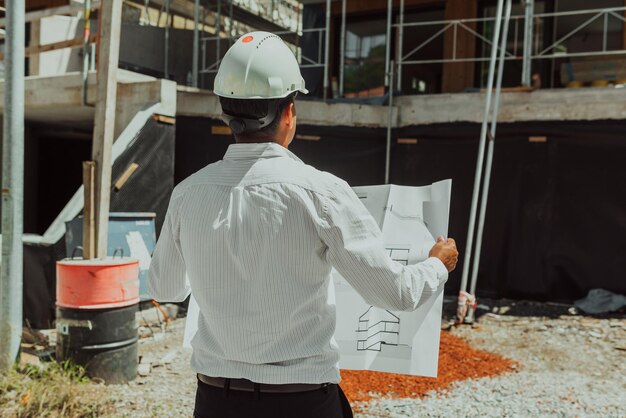Our planet is warming, and buildings are a big part of the problem. Net-zero buildings offer a solution. These buildings produce as much energy as they use or remove as much carbon as they emit. Engineering Consulting Services in India play a crucial role in making net-zero a reality. They bring the expertise needed to design, build, and operate these sustainable structures.

Net-zero means cancelling out the environmental impact from a building to the stated level so that, in practical terms, it is not zero but becomes clean. More than this word is a promise for a clean tomorrow. It is also important to understand the different types of net-zero buildings and debunk common misconceptions.
Our planet is warming, and buildings are a big part of the problem. Net-zero buildings offer a solution. These buildings produce as much energy as they use or remove as much carbon as they emit. Engineering Consulting Services in India play a crucial role in making net-zero a reality. They bring the expertise needed to design, build, and operate these sustainable structures.
Defining Net-Zero Energy BuildingsNet-zero energy buildings generate as much energy as they use. However, this is not always straightforward! A building may use solar panels to produce electricity. An example of a net-zero energy building would be if it generates the same amount of energy it uses over a year's time.
In some cases, buildings cancel out their energy consumption by using off-site REC (renewable energy credit) purchases. That means they pay for energy produced from renewable sources in another location. Technically, this still qualifies as net-zero. Net-zero energy consumption focuses on reducing energy use while net-zero energy production accentuates generating renewable energy.
Net-zero carbon buildings tackle carbon emissions. These emissions come in two forms: operational and embodied. Operational carbon comes from energy used to run the building. Embodied carbon comes from materials and construction. A net-zero carbon building minimizes both. It reduces energy use and uses low-carbon materials.
How do we measure net-zero performance?
Energy Use Intensity (EUI)is one key metric. It measures energy consumption per square foot. Lower EUI means better energy efficiency
Global Warming Potential (GWP)measures the environmental impact of materials. Lower GWP means a smaller carbon footprint.
bring a lot to the table in net-zero projects. They have expertise in various fields, including mechanical, electrical, and structural engineering. They optimize building performance from start to finish.
Early-Stage Planning and Feasibility StudiesConsultants are most effective when involved early. They help set realistic net-zero targets. Also, they conduct energy modeling, which shows how the building will perform. This helps to make informed decisions from the start.
Design Optimization and Technology IntegrationConsultants help select energy-efficient technology. This could be high-efficiency HVAC systems or advanced lighting controls. They also optimize the building envelope, including walls, windows, and insulation. Good design reduces energy consumption. Better technology makes net-zero easier to achieve.
Commissioning and Performance VerificationCommissioning ensures the building operates as designed. Consultants verify that it meets net-zero goals. They monitor performance and make adjustments, guaranteeing long-term efficiency.
Consultants offer services that make net-zero possible. These services range from modeling to design to integration.
Energy modeling predicts building performance and identifies areas for improvement. Best Civil Engineering Consultants in India use software to simulate energy use, optimizing designs.
Optimizing the Building EnvelopeWith a tight envelope significantly reducing heating and cooling requirements, building envelope consultants recommend insulation strategies that enhance airtightness and optimize window glazing.
Renewable Energy Systems Design and IntegrationWith a tight envelope significantly reducing heating and cooling requirements, building envelope consultants recommend insulation strategies that enhance airtightness and optimize window glazing. Consultants design and integrate renewable energy systems. Solar PV is a popular choice, while geothermal is another option. Leading Structural Engineering Consultants in India ensure that these systems operate efficiently.
Net-zero projects come with challenges. Consultants help navigate them.
Cost Considerations and Value EngineeringNet-zero can seem expensive. Consultants balance upfront costs with long-term savings. They use value engineering to find cost-effective solutions.
Regulatory Compliance and IncentivesLocal codes and standards can be complex. LEED and Passive House are common standards. Consultants help navigate these and identify available incentives.
Stakeholder Alignment and CommunicationGood communication is key. Consultants facilitate communication between architects, owners, and contractors to ensure everyone is on the same page.
Net-zero is evolving, and consultants are adapting.
Advancements in Building TechnologiesNew technologies are emerging all the time. Smart building systems optimize energy use. Advanced materials improve efficiency. Energy storage makes renewable energy more reliable.
The Growing Importance of Embodied Carbon ReductionReducing embodied carbon is becoming more important. Consultants help select low-carbon materials and improve construction practices.
The Expanding Role of Data Analytics and AIData analytics and AI optimize building performance and help achieve net-zero goals. Consultants use these tools to monitor and adjust systems.
Vijna Consulting and other Engineering Consulting Services in India are key to achieving net-zero buildings. They bring expertise, optimize designs, and overcome challenges. Net-zero buildings are essential for a sustainable future. Explore net-zero solutions and engage with Top Engineering Consulting Firms in India. Together, we can build a better world.